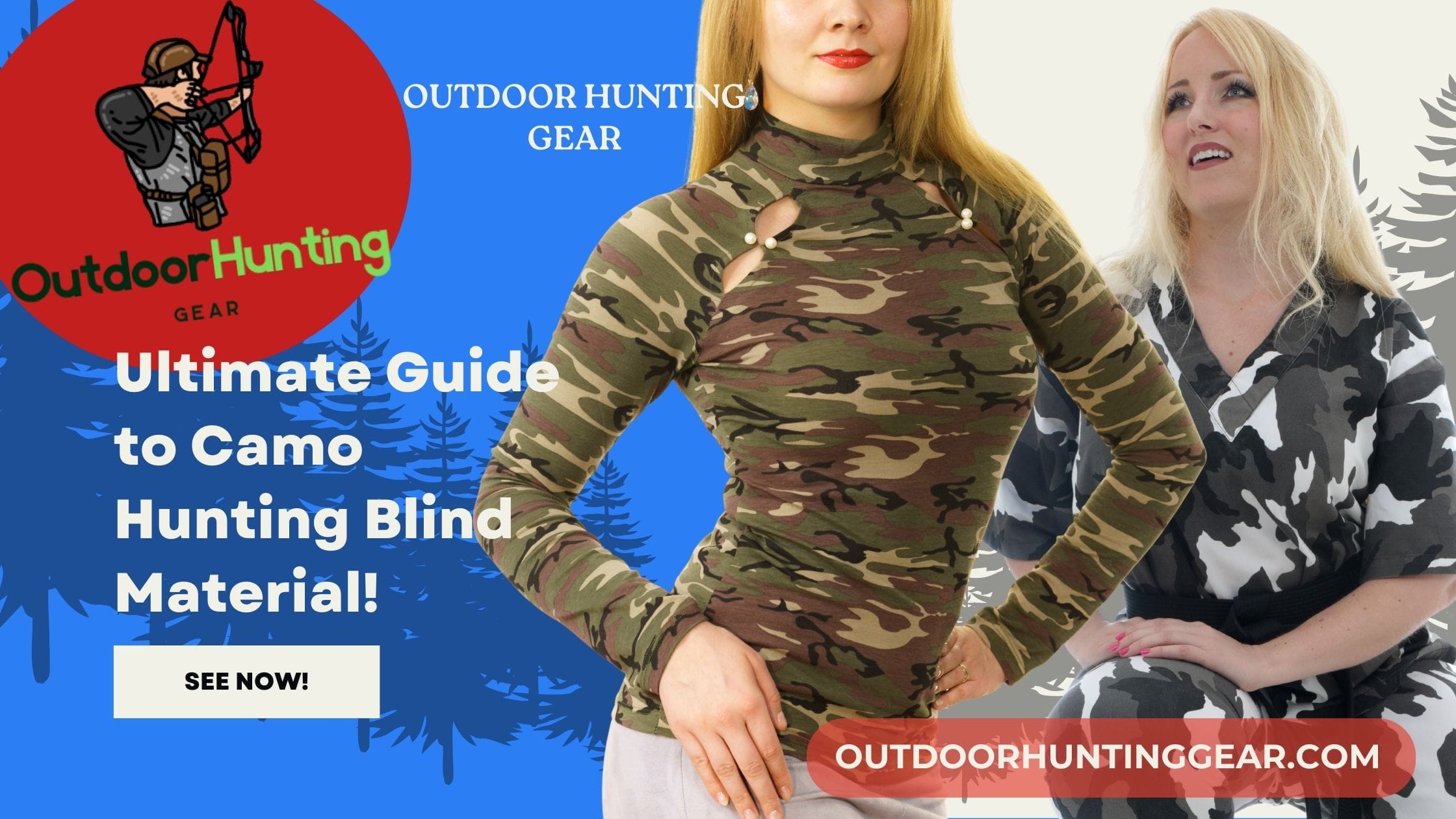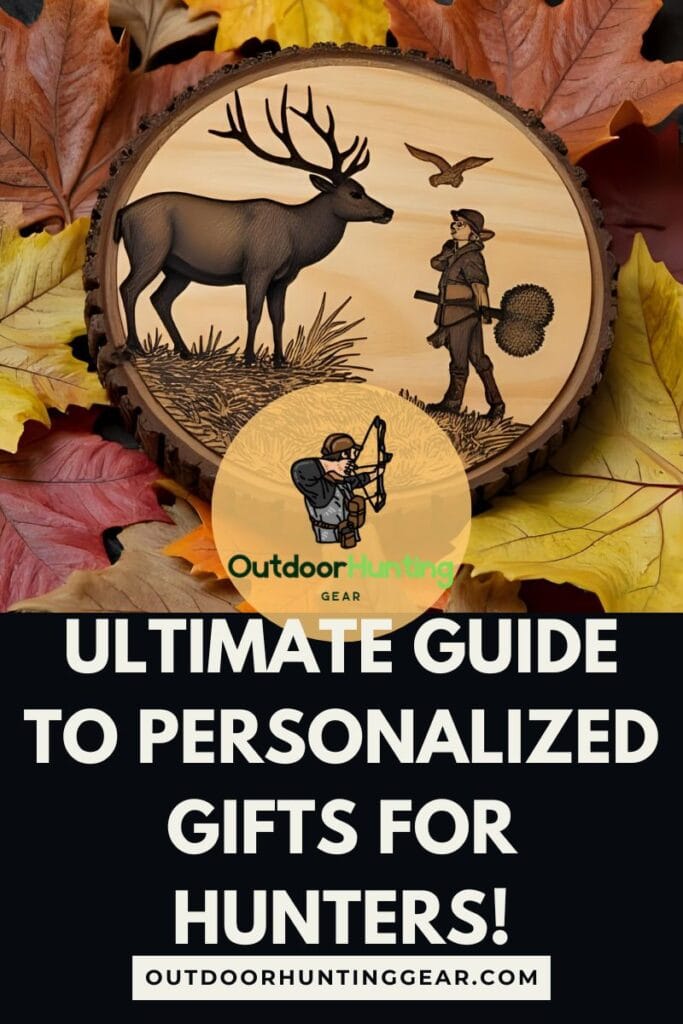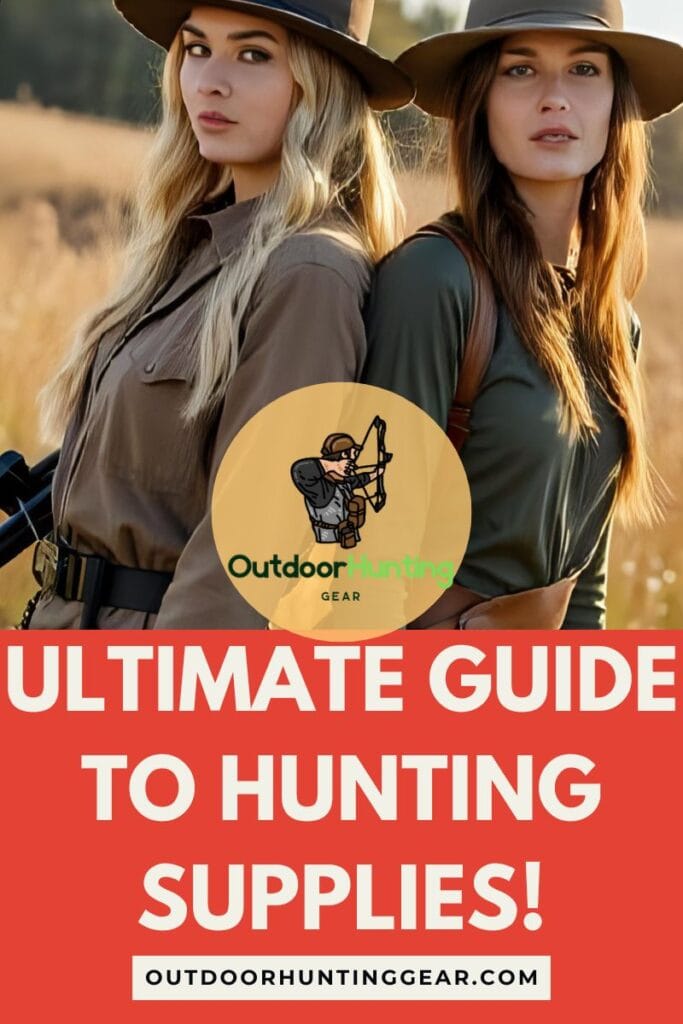Discover the best camo hunting blind material to help you stay hidden in the field. Learn about the top camouflage blind fabrics for your hunting setup, including features like durability, water resistance, and ease of use.
When it comes to hunting, choosing the right camo hunting blind material can make or break your experience in the field. As an outdoor enthusiast and seasoned hunter, I’ve tried a wide range of hunting blind materials and fabrics.
In this guide, I’m breaking down everything you need to know to help you select the perfect camouflage blind material that will keep you concealed, dry, and ready for action—whether you’re setting up a ground blind or crafting a custom deer stand.
Related Reading: Ultimate Guide to Hunting Blinds: How to Choose the Right Blind for Your Hunting Needs
- The Importance of the Right Camo Hunting Blind Material
- What is Camo Hunting Blind Material?
- Why is Camouflage Important in Hunting?
- Types of Camo Hunting Blind Material: What to Look For
- Compare the Best Camo Hunting Blind Materials: Find Your Perfect Match
- Features to Consider When Choosing the Best Camo Hunting Blind Material
- Popular Hunting Scenarios and Best Blind Materials for Each
- Personalizing Your Blind: Hunting Blind Wrap and Camo Accessories
- Final Thoughts: Choosing the Right Camo Hunting Blind Material
- Camo Hunting Blind Material FAQs
- What is the best camo hunting blind material for wet environments?
- How can I clean my hunting blind fabric?
- What is the best fabric for a lightweight hunting blind?
- Can I use camo blind material to wrap around an existing structure?
- What’s the best camo material for a deer stand?
- Score Big Savings on Hunting Gear: Top Deals on Amazon
- Find More of The Best Hunting Accessories!
The Importance of the Right Camo Hunting Blind Material
When you’re out in the field, one thing is clear: you need to stay hidden. Whether you’re after deer, waterfowl, or other game, the last thing you want is to be spotted. That’s why the right camo hunting blind material is such a game-changer.
Over the years, I’ve experimented with a variety of materials, from camo blind fabric for duck blinds to specialized hunting blind fabric for deer stands. Trust me, not all camo materials are created equal. Some are great for wet environments, others are built for durability, and some just make the setup more comfortable overall.
In this article, I’ll walk you through everything you need to know about the best camo blind material for your hunting needs, from fabric types and key features to tips on selecting the right material for different hunting environments.
What is Camo Hunting Blind Material?
The term camo hunting blind material refers to the fabric or other materials used to construct blinds, which are designed to conceal hunters from game. Whether you’re hunting from a ground blind or setting up a custom-built deer stand, your success often depends on staying hidden—and the material of your blind plays a huge role in that.
Why is Camouflage Important in Hunting?
Animals rely heavily on their sight to detect potential threats. That’s why the right camouflage blind material is essential to break up your outline and blend into the surrounding environment. Whether you’re in a marshy wetland hunting ducks or deep in the woods stalking deer, your blind’s camo fabric must mimic your environment, helping you stay concealed.
Types of Camo Hunting Blind Material: What to Look For
As a hunter, I’ve learned that the success of a blind setup often comes down to the quality and type of blind material you use. Let’s dive into the most common types of hunting blind material available and how each can be used to your advantage.
1. Woven Fabric
One of the most popular options for hunting blind fabric is woven fabric. Woven materials provide a durable and easy-to-clean option that works great for long-term use. They are often water-resistant, making them perfect for rainy or wet conditions. In my experience, these materials are ideal for ground blinds or duck blinds, where durability and ease of maintenance are key.
2. Polyester Camo Blind Material
Polyester is another excellent option for hunters looking for hunting blind camo fabric. It’s lightweight, resistant to water, and quick to dry, which is crucial for damp hunting environments. Polyester hunting blind fabric also offers impressive camouflage capabilities, blending seamlessly into most environments.
3. Mesh Camo Blind Fabric
For those hot early-season hunts or where airflow is a priority, mesh camo blind material offers excellent concealment while allowing ventilation. This type of fabric is also useful for duck blinds where heat buildup can be an issue. Mesh camouflage blind material is lightweight, breathable, and provides good visual breakup.
4. Vinyl Hunting Blind Material
Vinyl blind fabric is highly durable and water-resistant, making it ideal for extreme weather conditions. I’ve used vinyl in situations where rain and wind are a factor, and it holds up exceptionally well. Vinyl is also a great option if you’re creating a permanent or semi-permanent blind setup.
Compare the Best Camo Hunting Blind Materials: Find Your Perfect Match
Here’s a handy comparison table to help you choose the best camo hunting blind material for your needs. Each option includes key features and a “buy it” link so you can easily make a decision and take the next step toward enhancing your hunting experience.
| Material Type | Durability | Water Resistance | Camouflage Effectiveness | Ease of Cleaning | Best For | Buy It |
| Woven Fabric | High | Moderate | Excellent | Easy to clean | Deer Stands, Ground Blinds | Shop Woven Fabric Now |
| Polyester | Moderate to High | High | Great | Easy to clean | Wetlands, All-Purpose Blinds | Explore Polyester Options |
| Mesh Fabric | Moderate | Low | Good | Very easy | Early Season, Warm Weather | Check Out Mesh Fabrics |
| Vinyl Fabric | Very High | Very High | Excellent | Moderate | Extreme Weather, Permanent Blinds | Buy Vinyl Material Here |
| Camouflage Duck Blind Material | High | High | Excellent | Easy to clean | Duck Hunting | Find Duck Blind Material |
Best Camo Hunting Blind Material Comparison Overview
Choosing the right camo hunting blind material can significantly enhance your hunting experience. With this comparison table, you can easily see which material best fits your needs. Click on the respective buy it now links to explore your options and gear up for your next hunting adventure!
Features to Consider When Choosing the Best Camo Hunting Blind Material
There’s more to picking the right hunting blind material than just choosing a fabric that looks good. Here are the features I always consider when selecting my blind fabric:
1. Durability
You don’t want your blind material to wear down after just a season of hunting. Look for woven fabrics or vinyl if durability is your top priority. These materials can withstand rugged outdoor conditions and keep you covered for multiple seasons.
2. Water Resistance
Whether you’re setting up in wetlands or just preparing for unpredictable weather, a water-resistant hunting blind material is essential. Polyester and vinyl fabrics are excellent for keeping you dry and protecting your equipment.
3. Camouflage Effectiveness
The effectiveness of your camo blind material relies on how well it blends into the environment. Look for fabrics with a natural pattern that matches the terrain you’re hunting in. Whether it’s camo fabric for deer stands or camo material for duck blinds, make sure the pattern is appropriate for your specific setting.
4. Ease of Use
Setting up a blind should be easy, not a battle. Look for simple design and flexible fabrics that allow for quick assembly and adjustments. Materials like polyester or mesh are lightweight and easy to maneuver, making them perfect for fast setups.
Popular Hunting Scenarios and Best Blind Materials for Each
Having hunted in a variety of environments, I’ve come to rely on different types of camo hunting blind material depending on the situation. Here’s what I recommend for common hunting setups:
1. Deer Hunting
For deer hunting, a more durable, woven fabric is essential. Deer are easily spooked, so I always opt for a camo fabric for deer stands that mimics the natural surroundings. Make sure your deer blind material has a thick weave to withstand harsher outdoor conditions.
2. Waterfowl Hunting
When duck hunting, it’s all about staying dry and concealed. A camouflage duck blind material that is water-resistant is non-negotiable. Mesh fabrics and lightweight polyester options are great for duck blinds because they allow for easy setup while keeping you hidden and comfortable.
3. Ground Blinds
For ground blinds, I suggest a combination of mesh fabric and woven fabric for durability, breathability, and camouflage. Whether you’re hunting turkeys or whitetail, ground blinds need to be versatile, and this fabric combo works great for most setups.
Personalizing Your Blind: Hunting Blind Wrap and Camo Accessories
One of my favorite things about hunting is being able to personalize my items. When it comes to blinds, adding a hunting blind wrap can further enhance concealment. I recommend using hunting blind camouflage material or even adding natural elements like leaves and branches to create a more effective disguise.
Final Thoughts: Choosing the Right Camo Hunting Blind Material
After years of hunting, I’ve come to realize that selecting the best camo hunting blind material comes down to understanding your environment and hunting needs.
Whether you’re after a ground blind material that’s breathable and lightweight or a more durable camouflage blind fabric for a long-lasting deer stand, there’s a fabric out there that fits your needs. Don’t skimp on quality when it comes to your blind—you’ll thank yourself when you’re sitting in comfort, fully concealed, and waiting for your target.
Camo Hunting Blind Material FAQs
What is the best camo hunting blind material for wet environments?
For wet environments, I recommend going with water-resistant polyester or vinyl. Both materials offer excellent durability and will keep you dry during hunts.
How can I clean my hunting blind fabric?
Most hunting blind fabrics are easy to clean. Use a mild soap and water solution to wipe down the fabric, and always let it dry completely before storing it to prevent mildew.
What is the best fabric for a lightweight hunting blind?
For lightweight and breathable options, mesh camo fabric is ideal. It’s great for early-season hunts or warm climates, where air circulation is essential.
Can I use camo blind material to wrap around an existing structure?
Yes! You can use hunting blind wrap to enhance the concealment of any existing blind or hunting structure. Look for materials like woven fabric or mesh to cover your structure while keeping it camouflaged.
What’s the best camo material for a deer stand?
For deer stands, I recommend woven fabric or heavy-duty polyester that can withstand the elements and provide adequate camouflage.
By using the right camo hunting blind material, you’ll significantly improve your chances of a successful hunt. Whether you’re after waterfowl or big game, your choice of camouflage blind material will ensure you’re not seen—until it’s too late for your prey.

Top-rated camo hunting blind materials to consider for your next hunting trip.
#Hunting #CamoHuntingBlind #OutdoorLife #HuntingMaterials #HuntersChoice
Find More of The Best Hunting Accessories!
Find the Best Hunting and Outdoor Gear. Read More Amazing Expert Reviewed Best Gear & Top Hunter Picks Articles:
- Top 5 Tripods for Hunters
- Top 21 Expert Heated Hunting Gear Picks to Keep Your Warm the Season
- Top 3 Chairs for Hunting and Outdoor Adventures
- Top 3 Hunting Bows for Beginner Hunters
- Top 3 Rangefinders for Bow Hunters
- 3 Best Hunting Spotlights – Expert Picks
- Top 3 Absolute Best Scent Eliminators for Hunters
- Ultimate Guide to Finding the Best Hunting Side-by-Side for Your Next Outdoor Adventure
- Expert Hunter Picks for the Best Squirrel Hunting Gear



















